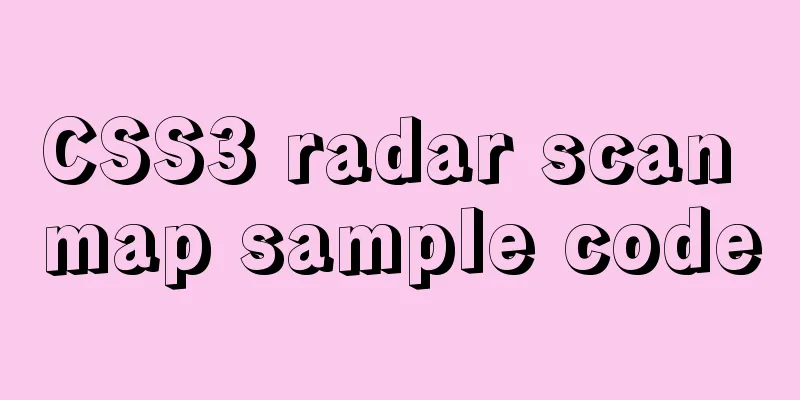Some suggestions on Vue code readability

|
Preface: I recently got into a Vue project and felt like I had fallen into a mountain of ancestral shit. The readability is extremely poor, not to mention the maintainability. Therefore, I would like to use this column to make some suggestions on the readability of Vue code. If you think the suggestions are useful, please like them. If you think the suggestions are unreasonable, please comment and criticize them. If you have better suggestions, please comment and add them. 1. Make good use of components to make the code more organized Never put all the implementation code of a page in a .vue file. Unless the page is very simple, the code in this The purpose of You can follow the steps below to split a Vue page into components to make the code more organized. 1. Extract UI componentsHow to define UI components? I personally recommend distinguishing UI components from business components based on whether they process server-side data. For example, loading pop-up windows, secondary confirmation pop-up windows, message prompt boxes, etc. are UI interaction components. After extracting the UI components, the UI interaction code and the business interaction code can be separated. Remember not to write business code in UI components, otherwise the UI components will not be reusable. To give a counterexample, adding the business code to be processed after the second confirmation in the second confirmation pop-up window will make the UI component unable to be reused. We can imitate the call of the secondary confirmation pop-up window in ElementUI to implement a secondary confirmation pop-up window component.
this.$confirm(message, title, options)
.then(res =>{})
.catch(err =>{})
In this way, the business code can be written in the callback function of then. The core implementation code of the component is as follows:
//confirm.vue
<template>
<div v-show="show">
//...
<div @click="ok"></div>
<div @click="cancel"></div>
</div>
</template>
<script>
export default {
data() {
return {
show: false,
}
},
methods: {
ok() {
this.show = false;
this.resolve();
},
cancel() {
this.show = false;
this.resolve();
},
}
}
</script>
//index.js
import Vue from 'vue';
import options from './confirm.vue';
const Confirm = Vue.extend(options);
let confirm = undefined;
const ConfirmInit = (options = {}) => {
return new Promise((resolve, reject) => {
options.resolve = resolve;
options.reject = reject;
confirm = new Confirm({
el: document.createElement('div'),
data: options
})
document.body.appendChild(confirm.$el);
Vue.nextTick(() => {
if (confirm) confirm.show = true;
})
return confirm;
})
}
Vue.prototype.$confirm = ConfirmInit;
//main.js import 'components/confirm/index.js'; //Global registration of secondary confirmation pop-up confirm component 2. Extract business components by moduleA page can be divided into multiple areas, such as header, footer, sidebar, product list, member list, etc. Each area can be used as a module to extract business components. 3. Extract functional components by functionAfter extracting business components by module, the business components may still be very large, so it is necessary to further extract functional components by function. Functions vary in size, and there are several principles to be aware of when extracting them: Overly simple functions are not extracted: For example, a collection function can be completed by requesting an interface. Functions like this should not be extracted. Only functions with logical operations of a certain complexity can be extracted. The function should be single: A functional component handles only one business. For example, a file reader component has a requirement to automatically collect the file after opening it. So where should the collection logic code be written? Perhaps you wrote the collection logic code in the method that listens for successful file opening in the component without thinking. After a while, the requirement changed to adding it to the reading record before clicking the collection button. When you went to modify the code in the component, you found that another page also referenced this component, so you had to add an extra parameter to the component to distinguish the business scenarios. As the requirements changed, the business scenarios were superimposed, and various judgment logics were added to the component code, which became long and boring over time. Obviously, this approach is not acceptable. The correct approach is to customize an event <fileReader @on-fileOpen-success="handleFileOpenSuccess" > </fileReader> In the component's method for listening for successful file opening, execute Functional components should contain as little UI as possible, and the UI part should be passed in through slots, which makes the components purer and more reusable. For example, it is impossible to add an upload icon to the upload component as the UI design draft changes. In this case, you can use the slot to pass in the upload icon.
//upload.vue
<template>
<div>
<slot name="icon"></slot>
</div>
</template>
//index.vue
<template>
<div>
<upload>
<template #icon>
//Upload icon</template>
</upload>
</div>
</template>
2. Use v-bind to make component properties more readable If you want to pass all properties of an object as
params: {
id: 1,
name: 'vue'
}
Before optimization: <componentA :id="params.id" :name="params.name"></componentA> After optimization: <componentA v-bind="params"></componentA> 3. Use attrs and attrs and listeners to encapsulate third-party components 1. $attrsWhen encapsulating third-party components, you often encounter a problem: how to use the properties and events of the third-party components themselves through the encapsulated components. For example, encapsulate an The
<template>
<div>
<el-input v-model="input"></el-input>
<div>{{errorTip}}</div>
</div>
</template>
<script>
export default {
props: {
value: {
type: String,
default: '',
},
errorTip: {
type: String,
default: '',
}
},
data() {
return {
}
},
computed: {
input: {
get() {
return this.value
},
set(val) {
this.$emit('input', val)
}
}
}
}
</script>
The <myInput v-model="input" :errorTip="errorTip"></myInput> If you want to add a disabled attribute to
<template>
<div>
<el-input v-model="input"
:disabled="disabled"></el-input>
<div>{{errorTip}}</div>
</div>
</template>
<script>
export default {
props: {
//...
disabled:
type: Boolean,
default: false
}
},
//...
}
</script>
After a while, you need to add other attributes of $attrs: Contains
v<template>
<div>
<el-input v-model="input"
v-bind="$attrs"></el-input>
<div>{{errorTip}}</div>
</div>
</template>
This is not enough, you also have to set the By default, parent-scoped Simply put, set
<template>
<div>
<el-input v-model="input"
v-bind="$attrs"></el-input>
<div>{{errorTip}}</div>
</div>
</template>
<script>
export default {
inheritAttrs: false,
props: {
value: {
type: String,
default: '',
},
errorTip: {
type: String,
default: '',
}
},
data() {
return {
}
},
computed: {
input: {
get() {
return this.value
},
set(val) {
this.$emit('input', val)
}
}
}
}
</script>
In this way, the properties of the 2. $listeners So how do you implement a custom event on the
<template>
<div>
<el-input v-model="input"
v-bind="$attrs"
@blur="blur">
</el-input>
<div>{{errorTip}}</div>
</div>
</template>
<script>
export default {
//...
methods: {
blur() {
this.$emit('blur')
}
}
}
</script>
<myInput
v-model="input"
:errorTip="errorTip"
@blur="handleBlur">
</myInput>
$listeners: Contains
<template>
<div>
<el-input v-model="input"
v-bind="$attrs"
v-on="$listeners">
</el-input>
<div>{{errorTip}}</div>
</div>
</template>
<script>
export default {
//...
}
</script>
<myInput
v-model="input"
:errorTip="errorTip"
@blur="handleBlur">
</myInput>
In the This concludes this article about some suggestions on Vue code readability. For more relevant Vue code readability content, please search 123WORDPRESS.COM's previous articles or continue to browse the following related articles. I hope everyone will support 123WORDPRESS.COM in the future! You may also be interested in:
|
<<: Detailed explanation of the process of building and running Docker containers
>>: A brief analysis of MySQL backup and recovery
Recommend
MySQL date functions and date conversion and formatting functions
MySQL is a free relational database with a huge u...
Docker renames the image name and TAG operation
When using docker images, images with both REPOSI...
Centos7 startup process and Nginx startup configuration in Systemd
Centos7 startup process: 1.post(Power-On-Self-Tes...
Example of how to create and run multiple MySQL containers in Docker
1. Use the mysql/mysql-server:latest image to qui...
Installation and configuration tutorial of MongoDB under Linux
MongoDB Installation Choose to install using Yum ...
Introduction to TypeScript basic types
Table of contents 1. Basic types 2. Object Type 2...
A brief talk about calculated properties and property listening in Vue
Table of contents 1. Computed properties Syntax: ...
Detailed explanation of global parameter persistence in MySQL 8 new features
Table of contents Preface Global parameter persis...
How to limit access frequency, download rate and number of concurrent connections in Nginx
1. Overview of modules and instructions used to l...
How to automatically backup mysql remotely under Linux
Preface: Basically, whether it is for our own use...
The most comprehensive collection of front-end interview questions
HTML+CSS 1. Understanding and knowledge of WEB st...
Serial and parallel operations in JavaScript
Table of contents 1. Introduction 2. es5 method 3...
JS uses the reduce() method to process tree structure data
Table of contents definition grammar Examples 1. ...
Nginx server https configuration method example
Linux: Linux version 3.10.0-123.9.3.el7.x86_64 Ng...
Problems with nodejs + koa + typescript integration and automatic restart
Table of contents Version Notes Create a project ...









